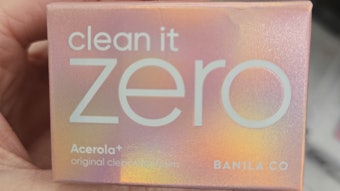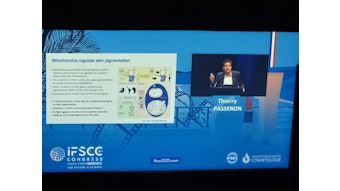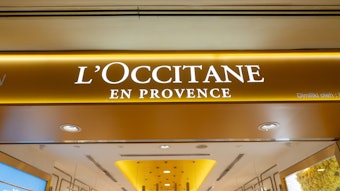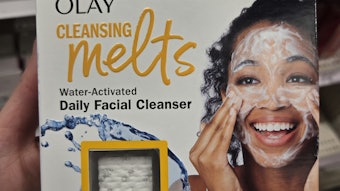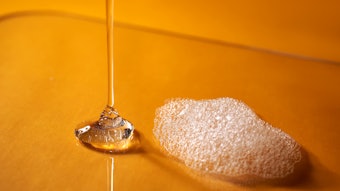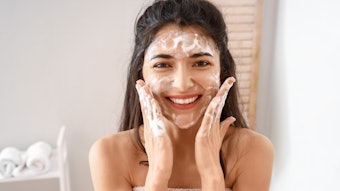The “no soap and water rule” has long been established in the cleansing routines of the majority of British women. They opt instead for different formats of mild cleansers: a facial wash, cleansing milk or a rich cleansing balm. As is generally accepted, cleansing is the first step of any good skin care routine, providing cosmetic and health benefits to facial skin—including preventing the premature signs of aging and maintaining skin barrier function. The cultural practices and seasonal patterns of skin cleansing were discussed in a previous article.1 There is also an overall emphasis on formulating facial cleansers with mild surfactants, which is not necessarily a cultural or seasonal trend, but instead is growing in parallel with the scientific understanding of the damage that harsh surfactants can cause to the skin.
Surfactant-Induced Skin Damage
Cleanser technology has come a long way from a “cleansing only” concept to one that includes other benefits such as moisturization, and marketing efforts have focused on these additional ingredients and claims. Harsh surfactants in facial cleansers can cause damage to skin proteins and lipids, leading to clinical symptoms of skin dryness, after-wash tightness, barrier damage, irritation and itch.
The theoretical model of “dry cycle” has essentially been a block in the understanding of stratum corneum dehydration.2 It illustrates the initial damage to the stratum corneum and further aggravation by surfactants. Skin barrier function requires maintenance of a specific ultrastructure. Surface dehydration, i.e., stratum corneum water content reduced to < 10%, is an initial step that leads to higher transepidermal water loss (TEWL) and then a further drop in hydration. A rapid decrease in stratum corneum flexibility, plasticity and destruction of the normal lipid lamellae follows. A change in osmotic pressure increases the permeability of the corneocyte envelope, causing the leaching of natural moisturizing factor and reducing water-holding ability. This initiates a cascade of hyper-proliferative events and subclinical inflammation.3 In addition, all surfactants tend to interact to some degree with lipids; their interaction with proteins also can vary significantly. The surfactants that interact minimally with both skin lipids and proteins are especially mild.4 Surfactants can disrupt bilayer lipids by extracting endogenous skin lipids or intercalating into the bilayer, and fatty acids are more susceptible to surfactant-induced removal than other lipids.5 A recent study reported a correlation between the drying stress in stratum corneum and the extent of barrier lipid lamelae modification.6 The authors postulate that both the changes in lipid conformational order and the removal of lipid components affect the stress relaxation properties of the stratum corneum.
Mild Surfactant Technologies
The use of mild surfactants, the addition of moisturizing technologies, and/or a method to selectively replenish saturated fatty acids could minimize lipid extraction and promote skin barrier repair. For example, one recently launched technologya consists of polyglyceryl-6 caprylate, polyglyceryl-4 caprate, polyglyceryl-4 cocoate and polyglyceryl-6 ricinoleate. According to the supplier, it is a high performance, PEG-free solubilizer, certified by Ecocert. The ingredient is based on polyglyceryl esters and made from 100% renewable raw materials. It is designed for mild cleansing without affecting the foaming properties of the formulation and shows damage mitigating attributes, effective moisturization and skin-feel benefits. Another mild, bio-based surfactant for personal care is decyl glucosideb, which according to the supplier produces moderate to high stable foam. It has broad compatibility with other surfactants, is self-preserved, has low eco-toxicity and is readily biodegradable.
Market-specific Surfactants
Just as different emulsifiers and penetration enhancers can augment or compromise skin barrier in different individuals, it is conceivable that surfactants intended for use in facial cleansers could be further tailored to a specific skin type, gender or ethnicity. A new cleanser based on sodium laureth carboxylate and alkyl carboxylates, referred to as AEC/soap, removes sebum without penetrating the stratum corneum. It was successfully trialed in a small controlled four-week study of adult Japanese men with mild to moderate acne, where it ameliorated sebum secretion in specific facial zones. This corresponded with a clinical improvement of acne.7
In addition to differences between the skin of men and women, there are significant differences in skin surface lipid profiles across different ethnic groups, and the differences seem to correlate with the skin barrier function. Research indicates that this might be driven by specific lipid fractions, not by a total lipid secretion.8 Therefore, a detailed understanding of the skin sebum profiles in specific skin types, age, gender and ethnicities, as well as their selective removal by surfactant-based facial cleansers, will enhance the development of new product concepts within the current trend of personalized skin care.
References
- www.cosmeticsandtoiletries.com/formulating/category/skincare/199916741.html
- www.ncbi.nlm.nih.gov/pubmed/14728695
- www.ncbi.nlm.nih.gov/pubmed/15955083
- www.ncbi.nlm.nih.gov/pubmed/14728695
- www.ncbi.nlm.nih.gov/pubmed/23363400
- www.ncbi.nlm.nih.gov/pubmed/24828034
- www.ncbi.nlm.nih.gov/pubmed/25115352
- www.ncbi.nlm.nih.gov/pubmed/24194973

